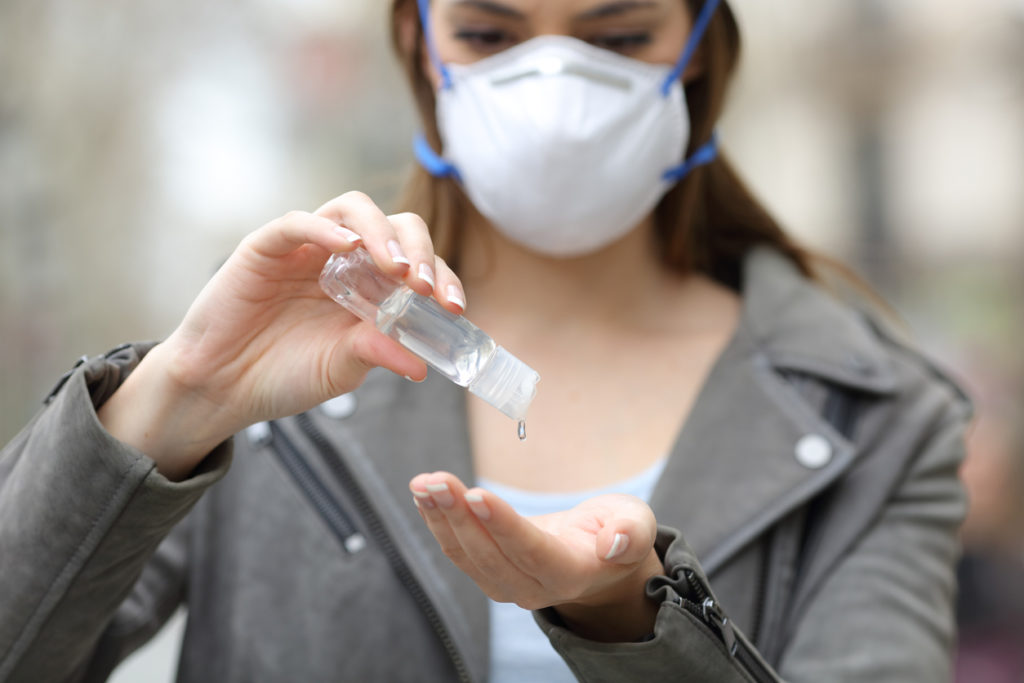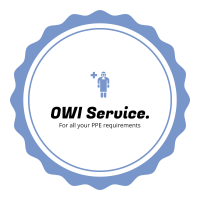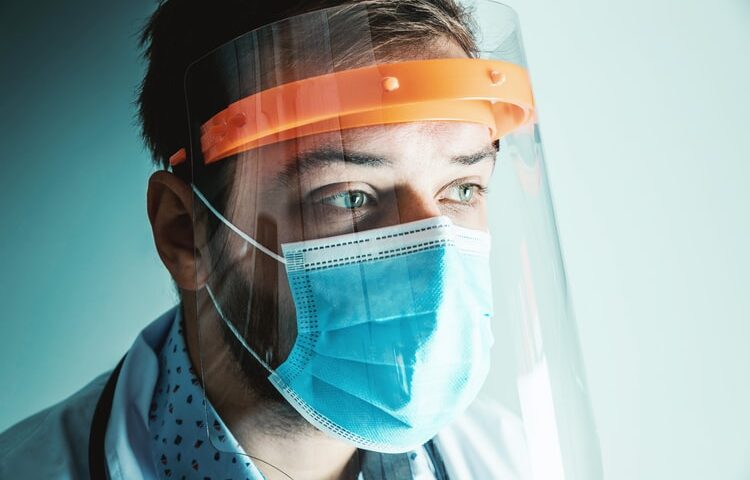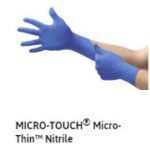PPE You Need for COVID-19

As the COVID-19 pandemic continues around the world, we are learning more about the disease, the virus that causes it (SARS-CoV-2) and how to protect ourselves.
Masks are currently mandatory in Victoria[1], as a crucial part of protecting the wearer and others, and masks are also good to consider elsewhere in Australia, as COVID-19 can be around you without you realising.
Hand sanitiser is another useful tool for protecting yourself, as long as you use a quality product which uses the World Health Organization (WHO) formula[2].
These methods of protection, along with hygiene measures and physical distancing, are the most important ways that you can protect yourself and others from COVID-19.
How to help reduce the spread of COVID-19[3]
- Wash your hands frequently with soap and water, especially before and after going to the toilet and before eating
- When you can’t use soap and water, use alcohol-based hand sanitisers
- Avoid touching your eyes, nose and mouth
- Clean and disinfect surfaces you use often, such as benchtops, desks and door handles
- Clean and disinfect objects you use often, such as mobile phones, keys, wallets and work passes
- Avoid using cash where possible: use tap and go
- Increase the amount of fresh air by opening windows or changing air conditioning
- Cover your coughs and sneezes with tissues or into your elbow, and dispose of used tissues immediately
- Stay more than 1.5 metres away from other people
- If you have cold- or flu-like symptoms, get medical advice and get tested for COVID-19
- If you have COVID-19, you must isolate and follow the directions of your local Public Health Unit.
What is PPE?
Personal Protective Equipment is clothing and equipment worn by people to protect themselves from hazards[5]. In relation to COVID-19, common PPE includes masks, gloves, hand sanitiser, eye protection and screens[6].
Why you should wear a mask
There is increasing evidence that wearing a mask helps prevent the spread of COVID-19. A mask can keep you and others safe. Wearing a face covering provides a physical barrier which can prevent people who have COVID-19 from spreading it to others, especially through coughing. This helps reduce community transmission1. Masks can also protect the wearer from getting infected[7].
Find out when you’ll be eligible for the COVID-19 vaccine.
Check your eligibility, and subscribe to receive updates
Why weren’t face masks recommended at the start of the pandemic?
Only as the pandemic has progressed, have experts discovered how much people with COVID-19 can spread the virus before symptoms appear (i.e. when they are pre-symptomatic) and that some people can have COVID-19 without having any symptoms (i.e. asymptomatic)8. People in these categories can unknowingly spread the disease to others, and masks can help to prevent this happening.
When you should wear a mask
Where masks are mandatory (currently Victoria), you must wear a face covering when you leave your home (unless an exemption applies)1. This includes travelling on public transport and when in a vehicle with people from outside your household.
Elsewhere, many health experts are now recommending that everyone wears a face mask when outside their homes, especially in spaces such as workplaces, public transport, supermarkets and other shops. This is particularly important in states where there is evidence of community transmission, even at low levels.
Types of masks and tips for use
Face masks can be surgical masks (loose-fitting disposable masks), N95 masks or cloth masks. N95 masks are also disposable, but offer more protection than surgical masks because they filter out both large and small particles when the wearer inhales. These masks are designed to block 95% of very small particles. The N95 mask is actually a type of respirator, and health care providers must be trained and pass a fit test to confirm a proper seal before using an N95 respirator in the workplace[8]. Face masks that have unfiltered one-way valves should not be used[1].
Cloth masks are made of washable fabric. The Chief Health Officer recommends a mask with three layers, however any face mask or covering is better than none[1]. There are guides available for making cloth masks, or you can simply purchase surgical or N95 masks without vents online.
Remember to wash or sanitise your hands before and after putting on and taking off your mask. Don’t touch your mask while wearing it, but if you do accidentally touch your mask, wash or sanitise your hands. If your mask becomes wet or dirty, change to a new one.
Precautions[8]
- Don’t put a mask on anyone who has trouble breathing, or is unconscious or otherwise unable to remove the mask themselves without help.
- Don’t put masks on children under 2 years of age.
- Don’t use face masks as a substitute for physical distancing.
When you should use hand sanitiser and why
The Department of Health recommends that you use soap and water wherever possible, but use hand sanitiser where soap and water may not be available[2]. Hand sanitisers are particularly useful for when you are away from your home, for purposes such as shopping, exercise, work and caring for others. Hand sanitisers are convenient to have in various places such as your car, handbag, work desk and by your front door.
Hand sanitisers contain antiseptic ingredients, which kill microorganisms (such as viruses) or prevent the growth of microorganisms[2]. The effectiveness of alcohol-based hand sanitisers depends on the amount of alcohol in the formulation. The World Health Organization (WHO) formula states hand sanitisers should have 80% ethanol or 75% isopropyl alcohol for these products to be effective[2], such as AMA’s ethanol hand rub sanitiser 80%.
Precautions[9]
- Keep alcohol-based hand sanitisers out of children’s reach.
- Do not use hand sanitisers before handling fire or cooking, as it can be flammable.
- Avoid touching eyes, nose or mouth immediately after applying hand sanitiser as it may cause irritation.
Health Care Workers
Obviously health care workers are at a higher risk of being exposed to COVID-19, and therefore require a higher level of PPE. This will usually include masks, gloves, eye shields and/or gowns, but will depend on their work and the type of interaction they are having with confirmed or possible COVID-19 patients[4].
References
1. Victoria Department of Health and Human Services (online). Face coverings: whole of Victoria. Accessed 20 August 2020. https://www.dhhs.vic.gov.au/face-coverings-covid-19
2. Department of Health Therapeutic Goods Administration (online). Hand sanitisers: Information for consumers. Accessed 20 August 2020. https://www.tga.gov.au/hand-sanitisers-information-consumers
3. Australian Government Department of Health (online). Good hygiene for coronavirus (COVID-19). https://www.health.gov.au/news/health-alerts/novel-coronavirus-2019-ncov-health-alert/how-to-protect-yourself-and-others-from-coronavirus-covid-19/good-hygiene-for-coronavirus-covid-19
4. Australian Government Department of Health (online). Information on the use of surgical masks. https://www.health.gov.au/sites/default/files/documents/2020/03/coronavirus-covid-19-information-on-the-use-of-surgical-masks.pdf
5. The University of Western Australia (online). Personal protective equipment guidelines. https://www.safety.uwa.edu.au/topics/physical/protective-equipment
6. Safe Work Australia (online). PPE. https://www.safeworkaustralia.gov.au/covid-19-information-workplaces/industry-information/delivery-drivers/ppe
7. World Health Organization (online). Q&A: Masks and COVID-19. https://www.who.int/emergencies/diseases/novel-coronavirus-2019/question-and-answers-hub/q-a-detail/q-a-on-covid-19-and-masks
8. Mayo Clinic (online). COVID-19: How much protection do face masks offer? https://www.mayoclinic.org/diseases-conditions/coronavirus/in-depth/coronavirus-mask/art-20485449
9. World Health Organization (online). Coronavirus disease (COVID-19) advice for the public.https://www.who.int/emergencies/diseases/novel-coronavirus-2019/advice-for-public
Share
Related Articles
Find out when you’ll be eligible for the COVID-19 vaccine.
Check your eligibility, and subscribe to receive updates



